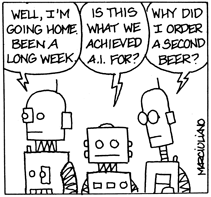CP2K is a freely available (GPL) program, written in Fortran 95, to perform atomistic and molecular simulations of solid state, liquid, molecular and biological systems. It provides a general framework for different methods such as e.g. density functional theory (DFT) using a mixed Gaussian and plane waves approach (GPW), and classical pair and many-body potentials.
Find The CP2K project homepage at: http://cp2k.berlios.de/
Categories
- Conferences (3)
- education (10)
- Fun (58)
- Meta (12)
- Open Access (10)
- Open Data (13)
- open science (34)
- Policy (48)
- Science (135)
- Software (633)
- Acoustics (3)
- Engineering (1)
- Physical (1)
- Speech Communication (2)
- Structural (1)
- Anthropology and Archaeology (3)
- Artificial Life (9)
- Astronomy (21)
- Aviation and Aeronautics (2)
- Chemistry (131)
- Analytical (4)
- Atmospheric (1)
- Biochemistry (6)
- Biophysical (3)
- Chemical Information (3)
- Crystallography (2)
- Electrochemistry (1)
- Molecule Viewers and Editors (39)
- Organic (2)
- Synthesis (1)
- Periodic Tables (3)
- Physical (1)
- Kinetics (1)
- Polymers (1)
- Spectroscopy (9)
- NMR (5)
- Surfaces (1)
- Theoretical and Computational (45)
- Cognitive Science (3)
- Neural Networks (2)
- Complex Systems (2)
- Computer Science (22)
- Algorithms And Computational Theory (2)
- Artificial Intelligence (4)
- Data Communication (4)
- Information Retrieval (1)
- Knowledge Discovery and Data Mining (3)
- Languages (1)
- Fortran (1)
- Measurement and Evaluation (1)
- Simulation and Modeling (2)
- Software Engineering (2)
- Symbolic and Algebraic Manipulation (1)
- Earth Sciences (19)
- Geology and Geophysics (5)
- Hydrology (5)
- Meteorology (1)
- Oceanography (3)
- Energy (3)
- Engineering (24)
- Forensics (2)
- Geography (12)
- Information Technology (1)
- Life Sciences (60)
- Bioinformatics (34)
- Ecology (5)
- Evolution and Population Genetics (3)
- Statistical (1)
- Theoretical (1)
- Genetics (9)
- Population (1)
- Medical Sciences (7)
- Physiology (2)
- Linguistics (2)
- Mathematics (108)
- Abstract Algebra (9)
- Combinatorics (1)
- Differential Equations (17)
- Fluid Dynamics (7)
- Ordinary (3)
- Partial (7)
- Dynamical Systems (4)
- Education (1)
- Geometry (3)
- Linear Algebra (26)
- Number Theory (6)
- Numerical Methods (5)
- Optimization (12)
- Probability (1)
- Set Theory (1)
- Statistics (8)
- Topology (1)
- Measurements and Units (3)
- Nanotechnology (2)
- Physics (30)
- Astrophysics (1)
- Atomic and Molecular (1)
- Computational (2)
- Condensed Matter (4)
- Dynamics (2)
- Fluid (1)
- High Energy (4)
- Magnetism (1)
- Materials (1)
- Nuclear (4)
- Optics (5)
- Plasma (1)
- Required Reading and Other Sites (25)
- Space (3)
- Tools (56)
- Numerical Libraries (8)
- Random Number Generators (2)
- Visualization (18)
- 2D Plotting (8)
- 3D Plotting (2)
- Acoustics (3)
- Uncategorized (4)

